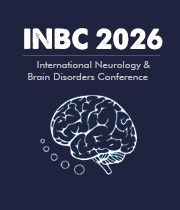Diffuse Injury
Diffuse injuries, sometimes known as diffuse axonal injuries (DAI), occur when the brain is subjected to rotational or shearing forces. They are considered to be the most common type of traumatic brain injury (TBI). Diffuse injuries are particularly dangerous as they can cause the disruption of nerve networks and the transmission of neuron signals throughout the brain. Symptoms of diffuse injuries can vary widely but may include confusion, impaired memory, difficulty in planning and initiating movements, headaches, nausea, slurred speech, balance issues, and changes in behavior or personality. In some cases, patients may also experience seizures or coma. The damage caused by diffuse injuries can range from mild to severe; in some cases, the individual’s brain may suffer from permanent damage due to the disruption of nerve signals. However, rehabilitation and other supportive treatments can be utilized to help with the recovery of individuals suffering from a diffuse injury. Physical, occupational, and speech therapy can help restore normal movement, mobility, and speech in areas of the brain affected by the injury. With the help of rehabilitation and supportive therapies, most patients suffering from DAI can make a successful recovery. Additionally, various medications, such as anticonvulsants and antidepressants, and behavior modification therapies may be recommended to help alleviate some of the symptoms associated with this type of injury. The prognosis of each case of diffuse injury will depend on a number of factors, including the severity of the injury, the age of the patient, and the medical team caring for the individual. With the help of supportive treatment, most individuals can make a successful recovery from a diffuse injury.

Joe Sam Robinson
Mercer University, United States
Robert B Slocum
University of Kentucky HealthCare, United States
George Diaz
Memorial Healthcare Systems, United States
Daniel Curry
Texas Children’s Hospital, United States
Zhenhuan Liu
Guangzhou University Chinese Medicine, China
Kiran Ghotra
Lake Erie College of Osteopathic Medicine, United States




Title : Atypical presentation of Juvenile myoclonic epilepsy in a 16-year-old female: A Case Report
George Diaz, Memorial Healthcare Systems, United States
Title : What we don’t know about hydrocephalus and It’s management
Daniel Curry, Texas Children’s Hospital, United States
Title : Artificial intelligence-driven DWI and FLAIR for the detection of early stroke changes: A systematic review
Shari L Guerra, The Medical City, Philippines
Title : Mapping neuroplasticity in occupational therapy: Evidence-based interventions with measurable neural outcomes
Jessica Marchant, Texas Woman's University, United States
Title : Non-pharmacologic management of orthostatic hypotension in inpatient rehabilitation: A quality improvement initiative
Laura Steakin, Rehabilitation Institute at Sinai, United States
Title : Non-pharmacologic management of orthostatic hypotension in inpatient rehabilitation: A quality improvement initiative
Mackenzie Weber, Rehabilitation Institute at Sinai, United States